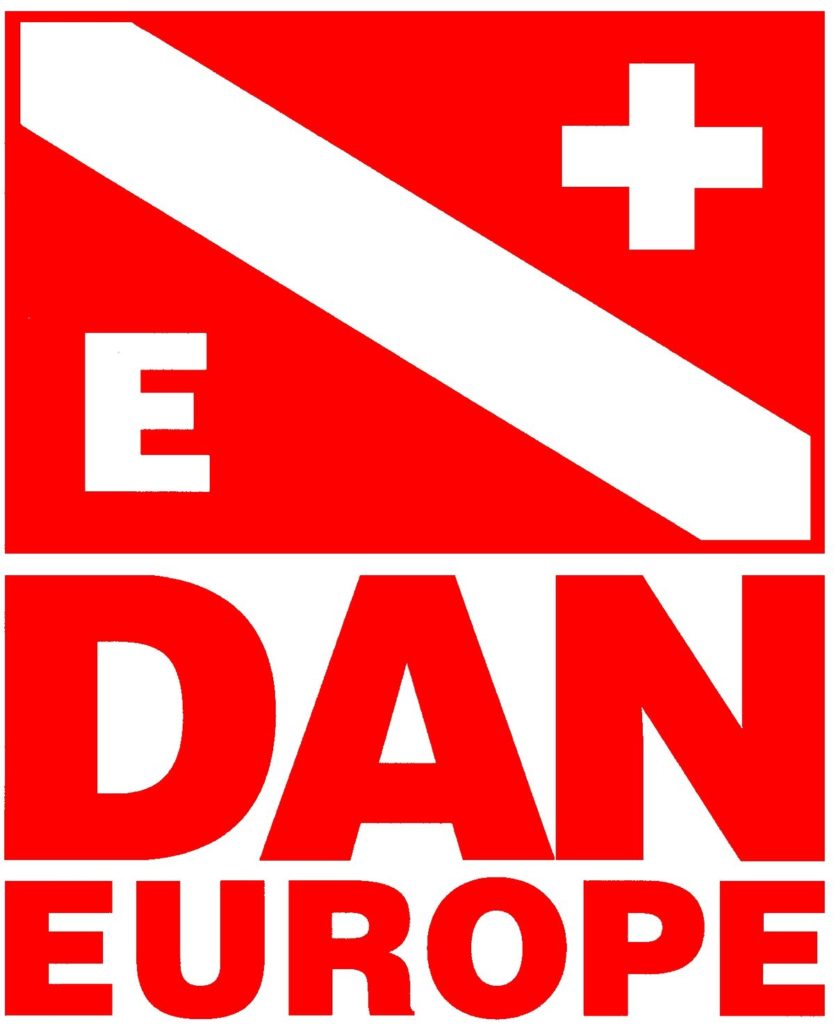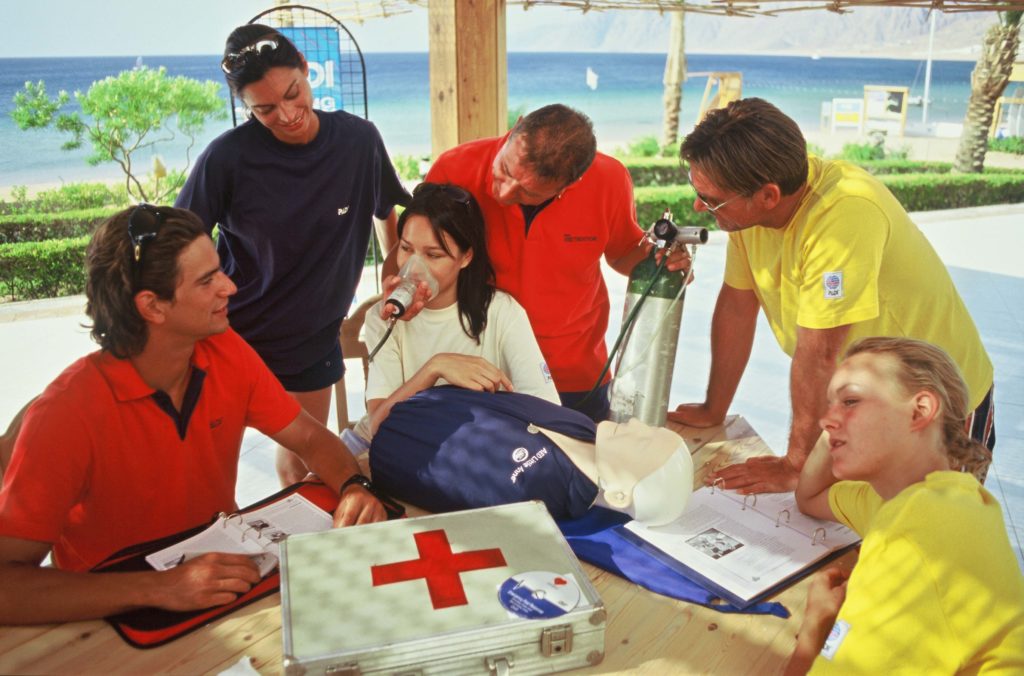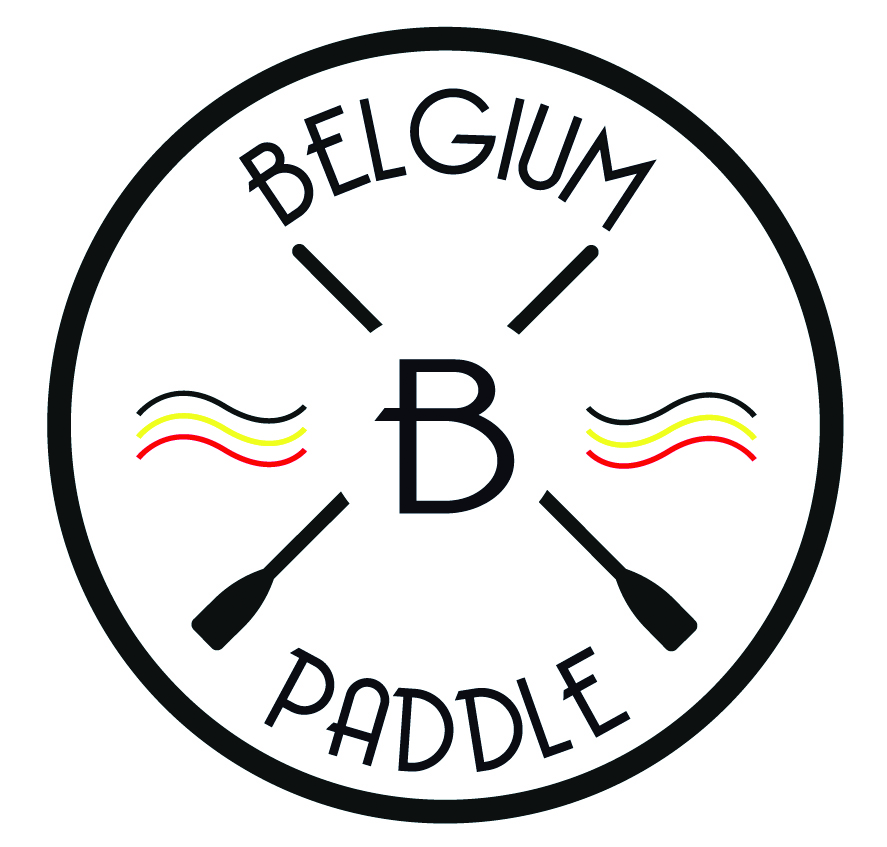
DAN Training courses teach the first aid steps to care for an injured diver and interact with medical professionals. These courses help you gain a better understanding of dive medicine and how to respond to a dive emergency within your scope of practice. They all provide diving medical education using a language that can be easily understood by everybody.
DAN courses are developed by a team of Medical and Educational Specialists.
Some of the Provider Courses are specifically developed for divers or life guards, while others such as the BLS and First Aid course are aimed at a wider audience.
DAN Training believes that those who seek First Aid Training are not just taking a course for a certification card but for the knowledge and confidence gained in order to provide care to an injured person. Therefore each specialised DAN course represents a specific area of First Aid.
The Oxygen Provider course, for example, teaches students how to provide Oxygen First Aid for Diving Accidents, whilst the AED course teaches the use of AEDs.
DAN courses are specialised First Aid courses, the skills and techniques are not just a small part of another course. The students get enough theory and practise time to ensure that they finish the course having gained the confidence to act fast and efficiently in case of emergency.
It is for this reason that professional Law Enforcement, Healthcare Professionals and Rescue Teams have chosen DAN Training.
DAN Basic Live Support.
| The DAN Basic Life Support (BLS) course will not only train divers and non-divers to resuscitate an injured person with a circulatory arrest, but can also prevent a person from getting in that condition. External bleeding, choking and shock can lead to severe circulatory and respiratory problems. The DAN BLS course will prepare you to react in the correct way, when accidents happen. |  |
Course Objective
The Basic Life Support course represents entry-level training designed to educate persons in providing Basic Life Support techniques to adult victims with life threatening injuries, while activating the local medical services.
The DAN Basic Life Support provider ("DAN BLS Provider") programme is designed to teach the knowledge and skills needed to provide Basic Life Support (BLS) to adult victims. BLS consists out of several First Aid techniques that support (or might restore) life. At the end of the course the DAN BLS provider will be able to recognise an emergency, activate the EMS and provide early BLS, while waiting for an AED or Advanced Life support to arrive at the scene of the accident. Early Access to the EMS and early BLS are 2 of the 4 links in the chain of survival.
Learning Objectives
At the end of this programme, DAN Basic Life Support, course participants will be able to:
- Explain basic Anatomy and Physiology
- List the 4 links of the “chain of survival”
- Explain why BLS is importan
- State the goal of BLS and resuscitation
- Recognise danger and perform a Scene Safety Assessment
- Protect themselves against cross infection
- Describe the function of chest compressions and ventilations
- Explain how to avoid Gastric distension
- Check responsiveness
- Reassure an injured person
- Open the airway
- Check for normal breathing
- Activate the EMS
- Perform chest compressions and rescue breathing – CPR
- List the advantages of a ace shield and resuscitation mask
- Explain the advantage of oxygen during resuscitation
- Explain the importance of defibrillation
- State the most common cause of chocking
- Describe the difference between mild and severe airway obstruction
- Provide care for choking
- Explain why an unconscious, breathing victim must be placed in the recovery position
- Place an unconscious, breathing person in the recovery position
- Describe the function of the blood
- Provide care for (severe) external bleeding
- Explain what is shock
- Name at least 3 causes of shock
- List at least 7 warning signs of shock
- Provide care for injured persons in shock
Dan First Aid.
| The DAN First Aid course represents training designed to educate persons with a CPR/BLS certification in providing First Aid to adult victims with non immediately life threatening injuries. Although the course was designed to be taught together with the DAN BLS course, it can also be offered as extra module to those who already have a DAN BLS or other BLS certification, respecting ERC guidelines. In a real accident situation First Aid skills are the next step after providing effective BLS. |
 |
Course Objective
The DAN First Aid provider programme is designed to teach the knowledge and skills needed to provide first aid to Adults in non - immediately life threatening situations (or after having provided BLS in life threatening situations).
First Aid consists out of several techniques that relieves pain, stop injury from getting worse and can determine the type of injury or illness.
Recommended Minimum Hours of Training
Knowledge development (lecture) hours = 3-4
Skills development (practice) hours = 5-6
This course should be taught as an eight - ten hour module. The time needed to teach the course varies and depends on many factors including the number of students and their ability to process the educational components of the program.
Learning Objectives
At the end of the DAN First Aid programme, course participants will be able to:
- Explain what is first aid and why to use these techniques
- Perform an injury assessment
- Describe how to react if a head or spinal injury is expected
- Perform an illness assessment including taking vital signs and the “SAMPLE” procedure
- Describe the signs, symptoms and first aid techniques for the major medical emergencies:
- Breathing difficulties
- Hyperventilation
- Asthma
- Heart problems
- Severe abdominal pain
- Altered level of consciousness
- Allergic reaction
- Diabetic emergencies (hyperglycaemia and hypoglycaemia)
- Poisoning (swallowed, inhaled and absorbed poison)
- Stroke
- Convulsions
- Alcohol and drug intoxication
- Secure and bandage a wound
- Splint a dislocated or fractured limb
- Explain when it is necessary to immobilise the injured limb
- Lift and move an injured person by using an adequate technique
- Explain when it is necessary to move/lift an injured person
- List the potential hazards when moving/lifting an injured person
- Explain at least 2 techniques to move/lift an injured person (Rautek method and log roll)
- Describe the signs, symptoms and first aid techniques for the following temperature related injuries
- Mild and severe hypothermia
- Frostbites
- Heat exhaustion
- Heat stroke
- Burns
Dan Aquatic Provider.
Oxygen administration for aquatic emergencies.
DAN O² Provider.
| DAN Oxygen First Aid for Scuba Diving Injuries course represents entry-level training designed to educate divers and interested non-divers (such as a charter boat captain) to recognise scuba diving injuries and to provide emergency oxygen first aid. |
 |
Course Objective
The course is designed to train and educate the general diving public in the techniques of using oxygen as first aid for a suspected dive injury. In addition, this course will introduce novice divers to the fundamentals of recognising diving injury signs and symptoms, response and management. This program also provides an excellent opportunity for experienced divers and instructors to continue their education.
The DAN Oxygen Provider course is not designed to train lay persons to provide oxygen to the general public. While the medical standards and equipment are the same regarding the emergency use of oxygen for both divers and non-divers, the DAN Oxygen Provider course does not prepare individuals to respond to the ill or injured member of the general public by using emergency oxygen.
Learning Objectives
Course participants must be familiar with the signs and symptoms of major diving injuries including near drowning and decompression illnesses (arterial gas embolism and decompression sickness).
Course participants must demonstrate proper deployment, assembly, disassembly, and use of all components of the DAN Oxygen Unit. This includes use of the demand inhalator valve / mask, constant flow (delivering oxygen up to 25 lpm), non-rebreather mask and oronasal resuscitation mask with supplemental oxygen inlet.
The course participant must demonstrate skill and confidence while providing emergency oxygen to simulated injured divers by:
-
- Assessing the scene and oxygen provider safety
-
- Deploying and operating the DAN Oxygen Unit
-
- Selecting and preparing the appropriate oxygen mask
- Operating the DAN Oxygen Unit and using these oxygen delivery devices:
- Demand inhalator valve and mask
- Constant-flow, non-rebreather mask
- Oronasal resuscitation mask with supplemental oxygen inlet
- Identification of the main components of the DAN Oxygen Unit
- Oxygen cylinder and valve
- Multi-function regulator
- "T" handle
- Handwheel/wrench
- Oxygen washer
- Constant-flow controller
- Intermediate (White) pressure hose
- Pressure activated check valve (in threaded outlet)
- Demand inhalator valve
- Oronasal mask
- Non-rebreather mask
- Oronasal resuscitation mask with supplemental oxygen inlet
DAN Advanced O² Provider.
| The DAN Advanced Oxygen First Aid for Scuba Diving Injuries Course is a Training Program for those individuals who have successfully completed the DAN Oxygen First Aid for Scuba Diving Injuries course. It is designed to train DAN Oxygen Providers to use a positive pressure valve (as the MTV100) and/or a bag-valve-mask (BVM); depending on local legal laws and regulations. |
 |
Course Objective
The DAN Advanced Oxygen First Aid for Scuba Diving Injuries ("DAN Advanced Oxygen Provider") programme is designed to teach the skills and knowledge needed to supplement Basic Life Support (BLS) and Cardiopulmonary Resuscitation (CPR) skills with resuscitation techniques to assist any diver who is not breathing. The course is divided into two parts: The use of the Manual Triggered Ventilator (MTV, also known as Resuscitation valve) and the use of the Bag Valve Mask (BVM). According to local laws and regulations, providers will be trained in the use of the MTV only or in the use of both MTV and BVM.
Learning Objectives
At the end of this programme, participants will be able to:
- List the instructions for providing oxygen to non-breathing injured scuba divers.
- State the ideal concentrations of oxygen and the factors that can influence them.
- Inspect the MTV and/or Bag Valve Mask.
- Outline the circumstances for using the MTV and/or the Bag Valve Mask.
- List the directions for ventilations with the MTV and/or Bag Valve Mask.
- List the potential problems associated with the use of the MTV and /or Bag Valve Mask.
- List the considerations for effective ventilations with the MTV and/or Bag Valve Mask.
- Describe the characteristics of an effective ventilation using the MTV and/or Bag Valve Mask.
- Explain the steps to follow for cleaning, disinfecting and maintenance of the MTV and/or Bag Valve Mask.
- Perform a scene safety assessment.
- List the steps in performing a scene safety assessment.
- Assess the Airway, Breathing and Circulation (ABCs) of an injured diver.
- Demonstrate a caring attitude towards a diver who becomes ill or injured.
- Establish and maintain the Airway and Breathing (perform Rescue Breathing) for an injured diver.
- Disassemble and reassemble the MTV and/or Bag Valve Mask.
- Demonstrate the correct technique for testing the MTV and/or the Bag Valve Mask prior to using it.
- Use the MTV and/or Bag Valve Mask to resuscitate non-breathing divers (during training this will be done on a mannequin).
- Use the MTV to provide oxygen to breathing divers.
The nature and scope of this course is limited to training Oxygen Providers to provide first aid, using the MTV and/or the BVM for non-breathing injured divers.
This course does not provide complete training for cardiopulmonary resuscitation (CPR).
DAN AED (Defibrillator).
| DAN Automated External Defibrillation course (AED) represents entry level training designed to educate the general diving public (and interested non-divers) to better recognise the warning signs of Sudden Cardiac Arrest and administer first aid using Basic Life Support techniques and an Automated External Defibrillator while activating the local emergency medical services, (EMS) and / or arranging for evacuation to the nearest appropriate medical facility. |  |
Course Objective
This course is designed to train and educate the general diving (and qualified non-diving) public in the techniques of using an automated External Defibrillator (AED) for victims of a cardiac arrest. In addition, this course also reviews first aid (and CPR) procedures using Basic Life Support techniques. This program also provides an excellent opportunity for experienced divers and instructors to continue their education.
Learning Objectives
At the end of this programme participants will be able to:
- Recognise the warning signs of sudden cardiac arrest.
- Provide Basic Life Support while setting up the automated external defibrillator.
- Provide basic life support with an AED.
- Care for and maintain an AED.
The nature and scope of this course is limited to training divers and interested non-divers such as boat captains, water enthusiasts and non-diving family members to provide emergency cardiac care with an Automated External Defibrillator.
This course does not provide training for cardiopulmonary resuscitation (CPR) or scuba diving rescue. The training exercises of this course presuppose that the ill or injured diver has already been brought to shore or is aboard the boat.
DAN Hazardous Marine Life Injuries.
| First Aid for Hazardous Marine Life Injuries represents entry-level training designed to educate the general diving (and interested non-diving) public to identify and recognise injuries caused by hazardous marine life and to provide first aid. |  |
Course Objective
The objectives of this course are to train and educate the general diving public and interested non-divers in the first aid techniques for a suspected hazardous marine life injury. In addition, this course will introduce divers to the identification of potentially hazardous marine life and how to avoid hazardous marine life injuries. This program also provides an excellent opportunity for experienced divers and instructors to continue their education.
Learning Objectives
At the end of this program, participants will be able to:
- Identify the four types of hazardous marine life injuries.
- Name at least five venomous marine animals.
- List five common warning signs of an envenomation.
- Describe the appropriate first aid procedure for managing a venomous marine animal injury.
- Name at least three aquatic animals that may bite a diver.
- List two common warning signs of marine animal bite.
- Describe the appropriate first aid procedure for managing a bite from a marine animal.
- Name at least three marine animals that may cause irritations to the diver.
- List at least four common warning signs of irritations.
- Describe the appropriate first aid procedure for managing brushes with aquatic life.
- Identify two common types of seafood poisonings.
- Name at least three types of fish that can cause seafood poisoning.
- List three common warning signs of seafood poisoning.
- State the reason why evaluation by a medical professional is necessary when seafood poisoning is suspected.
- Describe the appropriate first aid procedures for managing suspected seafood poisoning.
- Perform a scene safety assessment.
- List the steps in performing a scene safety assessment.
- Assess the Airway, Breathing and Circulation (ABCs) of an injured diver.
- Demonstrate a caring attitude towards a diver who becomes ill or injured.
- Establish and maintain the Airway and Breathing (perform Rescue Breathing) for an injured diver.
- Describe the importance of the use of supplemental oxygen as a first aid measure for injured divers.
- Demonstrate the techniques for controlling bleeding including direct pressure, elevation and the use of pressure dressings and pressure points.
- Locate and demonstrate the use of pressure points to control external bleeding.
- Apply dressings and bandages to manage wounds caused by hazardous marine life.
- Demonstrate an ongoing assessment and manage shock.
- Demonstrate the pressure immobilisation technique.
- List the components of an Emergency Assistance Plan.
- Describe at least five techniques or guidelines that minimize the risk of injury from marine animals.
The nature and scope of this course is limited to training divers and interested non-divers such as boat captains, water enthusiasts and non-diving family members to identify potential hazardous marine life; to provide first aid for a hazardous marine animal injury; and to prevent injuries caused by hazardous marine life. This course does not provide training for cardiopulmonary resuscitation (CPR) or scuba diving rescue. The training exercises of this course presuppose that the ill or injured diver has already been brought to shore or is aboard the boat.
DAN REMO².
|
An additional training module for those individuals who have successfully completed the DAN Oxygen First Aid for Scuba Diving Injuries course within the past 12 months. It trains DAN Oxygen Providers to recognise diving injuries where a MO2R System will be an effective method of providing emergency oxygen first aid and how to assemble and provide emergency oxygen first aid using a MO2R. The MO2R System will benefit a responsive and breathing injured diver where there is substantial distance to the nearest medical facility or delay to the next level of emergency response. A MO2R is designed to provide high concentrations of emergency oxygen for up to eight hours. |
 |
Course Objective
The objective of the MO2R Training Module is to train and educate DAN Oxygen Providers in the techniques of using a MO2R System as first aid for a suspected dive injury. Certified MO2R Providers will be able to:
- Determine when it is appropriate to deploy the MO2R unit
- Set up the system
- Use the system with a DAN Oxygen Unit to provide oxygen first aid to a conscious, breathing, injured diver.
Learning Objectives
Course participants must be familiar with the indications for use, the operation and the safety concerns of the MO2R.
Each course participant must demonstrate the skills necessary to assemble and use the MO2R to provide oxygen first aid to a simulated injured diver.
Each course participant must be able to follow and complete each step of the MO2R System Operational Checklist.
To successfully complete the MO2R Training Module of the Oxygen First Aid for Scuba Diving Injuries course, participants must demonstrate skill and confidence to complete the following skills:
- Scene assessment and oxygen provider safety
- Deployment and operation of the DAN Oxygen Unit
- Decision-making: When to use the MO2R
- Identification of the main component parts of the MO2R
- Carbon Dioxide Absorbent Canister
- Breathing Circuit
- Rebreathing Bag
- Oronasal Mask + Mask Strap
- Peep valve
- Set-up of the MO2R System
- Operation of the MO2R System
DAN Neuro on-site.
| This course, On-Site Neurological Assessment for Divers, is an advanced-level program that provides additional training for those individuals who have successfully completed the DAN Oxygen First Aid for Scuba Diving Injuries course within the past two years (24 months). |  |
Course Objective
The DAN On-Site Neurological Assessment for Divers Provider (“DAN On-Site Neuro Provider”) program is designed to:
- Refresh the knowledge of the warning signs of a dive emergency
- Identify when it is appropriate to conduct an on-site neurological assessment
- Conduct an on-site neurological assessment
Learning Objectives
At the end of this program, DAN On-Site Neurological Assessment for Divers, participants will be able to:
- Understand and identify common warning signs of decompression illness
- Take a dive history to determine when it is appropriate to conduct a complete n-Site Neurological Assessment
- Use an On-Site Neurological Assessment Slate to conduct a complete On-Site Neurological Assessment
Knowledge Development
- Review of Decompression Illness
- The Purpose of an On-Site Neurological Assessment
- The Five Areas Evaluated as Part of an On-Site Neurological Assessment, including:
- Mental Function
- Cranial Nerves
- Motor Function (Strength)
- Sensory Function
- Balance and Coordination
Skills Development
- Taking a History
- Taking Vital Signs
- Mental Function
- Consciousness
- Speech and Language
- Orientation to Time and Place
- Judgment
- Short-Term Memory
- Abstract Reasoning
- Calculations
- Cranial Nerves
- Eye Control
- Facial Control
- Facial Sensation
- Hearing
- Motor Function (Strength)
- Shoulders (Deltoids)
- Biceps
- Triceps
- Finger Spread
- Grip Strength
- Hip Flexors
- Quadriceps
- Hamstrings
- Feet
- Sensory Function
- Light Touch
- Sharp Touch
- Balance and Coordination
- Walking
- Finger-Nose-Finger
Eatch DAN course is one-day course.
Diver: 160 euros, Kit + certification: 65€.

DAN Diving Emergency Management Provider (DEMP).
O² + AED + HMLI. 3 days. Diver: 420 euros.
DAN Diving First Responder (DFR).
O² + ADV O² + AED + HMLI.
4 days. Diver: 500 euros.
DAN Diving Emergency specialist.
| DAN's recognition program for divers who are interested in dive safety. |  |
Provider
Continuing education is an important way for divers to continue to hone their diving skills and improve as divers. Divers Alert Network understands the importance of being an active and involved diver who takes the time to learn about not just new dive techniques, but techniques to care for yourself and others injured in a dive accident.
To recognise this commitment to dive safety, DAN has created a recognition program called Diving Emergency Specialist. The DES designation is a way to commend divers who have sought out the training they need to be prepared buddies and safer divers.
To earn this recognition, divers must hold current certifications in:
- Oxygen First Aid for Scuba Diving Injuries (or equivalent)
- Basic Life Support & Defibrillation - BLSD (or equivalent)
Plus three of the following:
- Advanced Oxygen First Aid for Scuba Diving Injuries
- First Aid for Hazardous Marine Life Injuries
- On-Site Neurological Assessment for Divers
- Medical Oxygen Rebreather (MO2R)
- First Aid (or equivalent)
Divers who did a DAN Diving First Responder Provider course, have the needed prerequisites as stated above.
The diver must also hold:
- a rescue-level certification or higher with a dive training agency
This program is open to any diver.
To receive this recognition, the diver should submit an application directly to DAN Training at training@daneurope.org, together with photocopies of all the required certifications (if not DAN certifications) and then will be requested a payment of €20 application fee.
DES recognition includes a:
- Plastic Diving Emergency Specialist certification card
- DES certificate
As a DES recognised diver, you will also receive:
- a coupon good for 10% off oxygen units or accessories.
---
The BLS course and 5 of the others DAN courses.
5 days. Diver: 750 euros.






 © DynamicFrameworks - Elite ThemeForest Author.
© DynamicFrameworks - Elite ThemeForest Author.